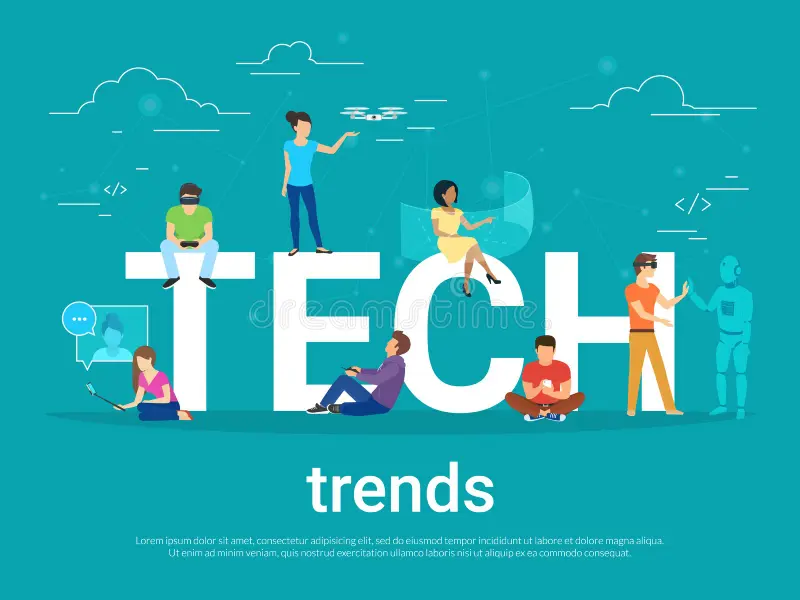
Top Ten Things – The year 2025 will mark a major turning point in technological evolution. Several tech trends are set to dominate both personal and professional spheres, influencing how we communicate, create, and collaborate. These trends won’t just shape gadgets or services—they’ll redefine industries and everyday life. With the growing need for speed, personalization, and intelligence, emerging technologies will bring deeper impact at scale. Here’s what to expect.
“Read More: Cultural Shows in Thailand: Travel Guide to Seeing Traditional Performance Events”
Artificial intelligence now writes blog posts, creates images, composes music, and even builds websites. In 2025, AI tools like GPT, DALL·E, and Runway will be used across design teams, advertising agencies, and education platforms. Businesses will scale creative production with fewer human hours. Educators will prepare students to work alongside content-generating models. This doesn’t replace creativity—it enhances and accelerates it.
While quantum computers are still in development, 2025 will see their first impactful uses. Sectors like logistics, pharmaceuticals, and materials science will benefit from quantum’s ability to test billions of scenarios instantly. Unlike classical computers, quantum machines analyze probability and complex interactions. Companies will use this for drug discovery, risk modeling, and faster simulations. The technology won’t be mainstream yet—but it will be useful and visible.
“Read About: Top 10 Latest Family Electric Car Features Ultra-Fast 15-Minute Charging”
E-commerce, streaming services, and even digital health platforms will use behavioral data to personalize every user interaction. In 2025, personalization won’t stop at name-based greetings—it will shape layouts, product recommendations, and even pricing. AI will adjust content in real time based on mood, location, or usage habits. While some may worry about privacy, others will enjoy relevance and speed. Consent management will become central in this hyper-personal world.
Ambient computing refers to technology that fades into the background but assists constantly. Smart environments in homes, offices, and vehicles will detect needs and respond without direct commands. For example, lights adjust to your mood, music follows you room-to-room, and schedules shift based on your calendar. Voice, touch, and motion sensors will work together seamlessly. Devices will feel less like machines and more like silent partners.
Edge AI pushes processing closer to the device instead of relying on cloud computing. This reduces latency, saves bandwidth, and increases data security. In 2025, surveillance cameras, industrial robots, and even smartphones will use edge AI to respond faster. For instance, a drone analyzing crops doesn’t need to wait for cloud servers—it decides immediately. The result? Smarter decisions with better privacy safeguards.
A digital twin is a virtual model that mirrors a real object, system, or process. In 2025, companies will simulate everything—from engines to cities—in real time. These twins allow businesses to test ideas before implementation. Cities will use them to manage traffic. Manufacturers will prevent breakdowns by predicting wear. The digital twin revolution is about foresight and precision, saving time and reducing risk.
Although 5G is still rolling out, 6G development is already underway. In 2025, research institutions and telecom giants will begin testing 6G architecture. The new standard will offer 100x faster speeds and microsecond latency. Applications will go far beyond mobile phones—supporting advanced robotics, autonomous vehicles, and immersive digital experiences. Even though consumers won’t use it yet, the foundation will be set.
BCIs allow humans to control digital devices with brain signals. While still experimental, 2025 will bring early consumer-grade BCIs for gaming, communication, and accessibility. Companies like Neuralink and NextMind will conduct public trials. Users might scroll with a thought or type with a blink. These tools will initially help people with physical limitations but later offer broader applications in VR, productivity, and learning.
In 2025, green technology will move from trend to requirement. From biodegradable packaging to solar-powered devices, products will reflect climate concerns. Tech companies will prioritize energy efficiency, modular parts, and recyclable materials. Consumers will choose eco-conscious brands more often. Cities will enforce e-waste policies and sustainable tech standards. Innovation will include not just performance—but responsibility.
Digital identity will shift toward decentralized models. Instead of storing personal data with governments or tech giants, users will own and manage their credentials through blockchain-based wallets. In 2025, this means logging in, verifying age, or signing contracts without giving away more than needed. This shift empowers individuals, reduces fraud, and creates more secure digital interactions. Governments and banks will begin early adoption.